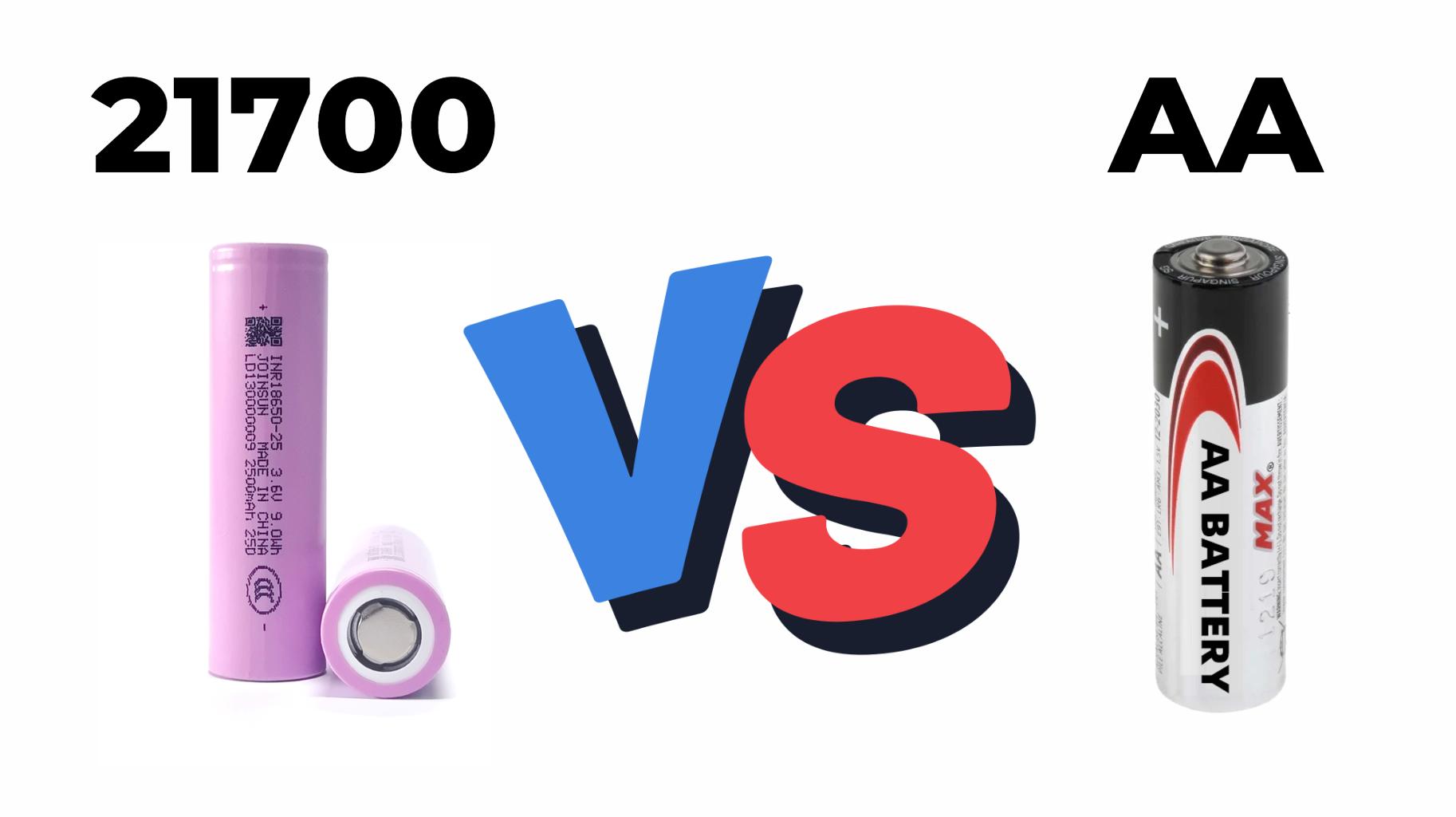Using 21700 batteries in devices designed for AA batteries can present compatibility issues due to differences in size, voltage, and design. While the larger capacity of 21700 batteries offers benefits, their physical dimensions make them unsuitable for many devices originally designed for AA batteries without proper adapters or modifications.
Overview of 21700 Batteries
The 21700 battery is a cylindrical lithium-ion battery that measures approximately 21mm in diameter and 70mm in length. It has gained popularity due to its high energy density and ability to deliver more power than smaller battery types, such as the AA or the widely used 18650 batteries. These batteries are commonly used in high-drain applications, including electric vehicles, power tools, and some consumer electronics.
Physical Dimensions and Specifications
The dimensions and specifications of the 21700 battery are critical when considering compatibility with devices designed for AA batteries:
| Specification | Measurement |
|---|---|
| Diameter | Approximately 21 mm |
| Length | Approximately 70 mm |
| Typical Capacity | Ranges from 3000 mAh to 5000 mAh |
| Voltage | Typically around 3.6V to 3.7V |
In contrast, the standard AA battery measures about 14.5mm in diameter and 50.5mm in length, making it significantly smaller than the 21700.
Comparison with AA Batteries
When comparing the two types of batteries, it’s essential to consider their physical differences and performance characteristics:
| Feature | AA Battery | 21700 Battery |
|---|---|---|
| Diameter | ~14.5 mm | ~21 mm |
| Length | ~50.5 mm | ~70 mm |
| Capacity | ~1800 mAh to ~3000 mAh | ~3000 mAh to ~5000 mAh |
| Voltage | ~1.5V (alkaline) | ~3.6V – 3.7V (Li-ion) |
This comparison highlights that while the capacity and voltage differ significantly, the physical size difference is the most critical factor affecting compatibility.
Compatibility Issues with Devices Designed for AA Batteries
The primary compatibility issue arises from the size difference between the two battery types. Most devices designed for AA batteries will not accommodate a larger battery like the 21700 without modification or an adapter.
Key Compatibility Challenges:
- Physical Size: The larger diameter and length of the 21700 battery prevent it from fitting into standard AA battery compartments.
- Voltage Differences: Many devices are designed to operate on a specific voltage (typically around 1.5V for AA alkaline batteries). The higher voltage of lithium-ion batteries (around 3.6V) can potentially damage devices not designed to handle it.
- Connection Type: The terminal configuration may differ between battery types, which can lead to poor connections or short circuits if not properly adapted.
Advantages of Using 21700 Batteries
Despite compatibility issues, there are several advantages to using 21700 batteries when appropriate:
- Higher Capacity: With capacities ranging from approximately 3000mAh to over 5000mAh, they provide longer run times compared to standard AA batteries.
- High Discharge Rates: Ideal for high-drain devices that require significant power output.
- Rechargeability: Unlike disposable AA batteries, lithium-ion cells can be recharged hundreds of times, reducing waste.
Disadvantages of Using 21700 Batteries in AA Devices
Using a larger battery like the 21700 in devices designed for AA batteries comes with drawbacks:
- Cost: Higher upfront costs compared to standard AA batteries.
- Size Limitations: Many devices simply cannot accommodate a larger battery without modifications.
- Potential Damage: Using a higher voltage battery in a device not designed for it can lead to overheating or permanent damage.
Best Practices for Using 21700 Batteries in AA-Compatible Devices
If you wish to use a 21700 battery in a device originally designed for AA batteries, consider these best practices:
- Use Adapters: Purchase or create an adapter that allows you to fit a larger battery into an AA compartment securely.
- Check Voltage Compatibility: Ensure that the device can handle the higher voltage output without risk of damage.
- Monitor Performance: Keep an eye on how the device performs with the new battery; if overheating occurs, discontinue use immediately.
Latest News in Battery Technology
Recent advancements in lithium-ion technology have led to improvements in safety features and energy density. Researchers are developing new materials that enhance performance while reducing costs, making lithium-ion batteries more accessible for various applications, including those traditionally using alkaline batteries like AAs.
Expert Comment
“While transitioning from traditional AA batteries to lithium-based options like the 21700 can offer significant performance benefits, users must carefully consider compatibility issues and ensure that their devices can handle these changes safely,” states a battery technology expert.
FAQ Section
Q: Can I use a 21700 battery instead of an AA battery?
A: Generally no; due to size differences and voltage variations, using a 21700 battery directly in an AA device is not recommended without appropriate modifications.Q: What happens if I use a higher voltage battery in an AA device?
A: It may damage the device due to overheating or electrical failure since most AA devices are designed for lower voltages.Q: Are there adapters available for using larger batteries in smaller compartments?
A: Yes, there are adapters specifically designed to allow larger lithium-ion cells like the 21700 to fit into standard AA-sized compartments.Q: What are the benefits of switching to lithium-ion over alkaline?
A: Lithium-ion batteries offer higher capacity, longer lifespan, faster charging times, and are rechargeable compared to single-use alkaline batteries.
Know more:
How do the costs of AA and 21700 batteries compare over time
What are the environmental impacts of disposing AA and 21700 batteries
Which devices are best suited for 21700 batteries
How does the energy density of 21700 batteries affect their performance
Are there any compatibility issues when using 21700 batteries in devices designed for AA batteries



